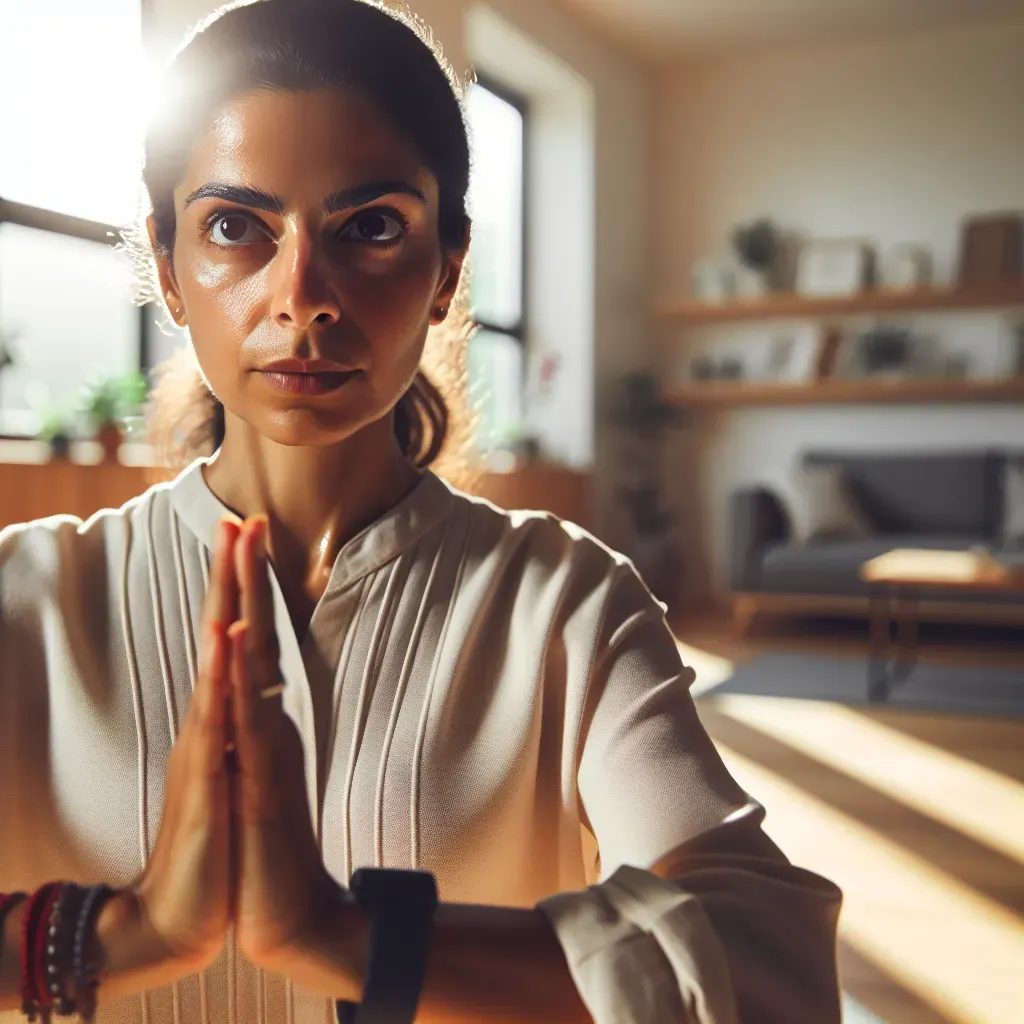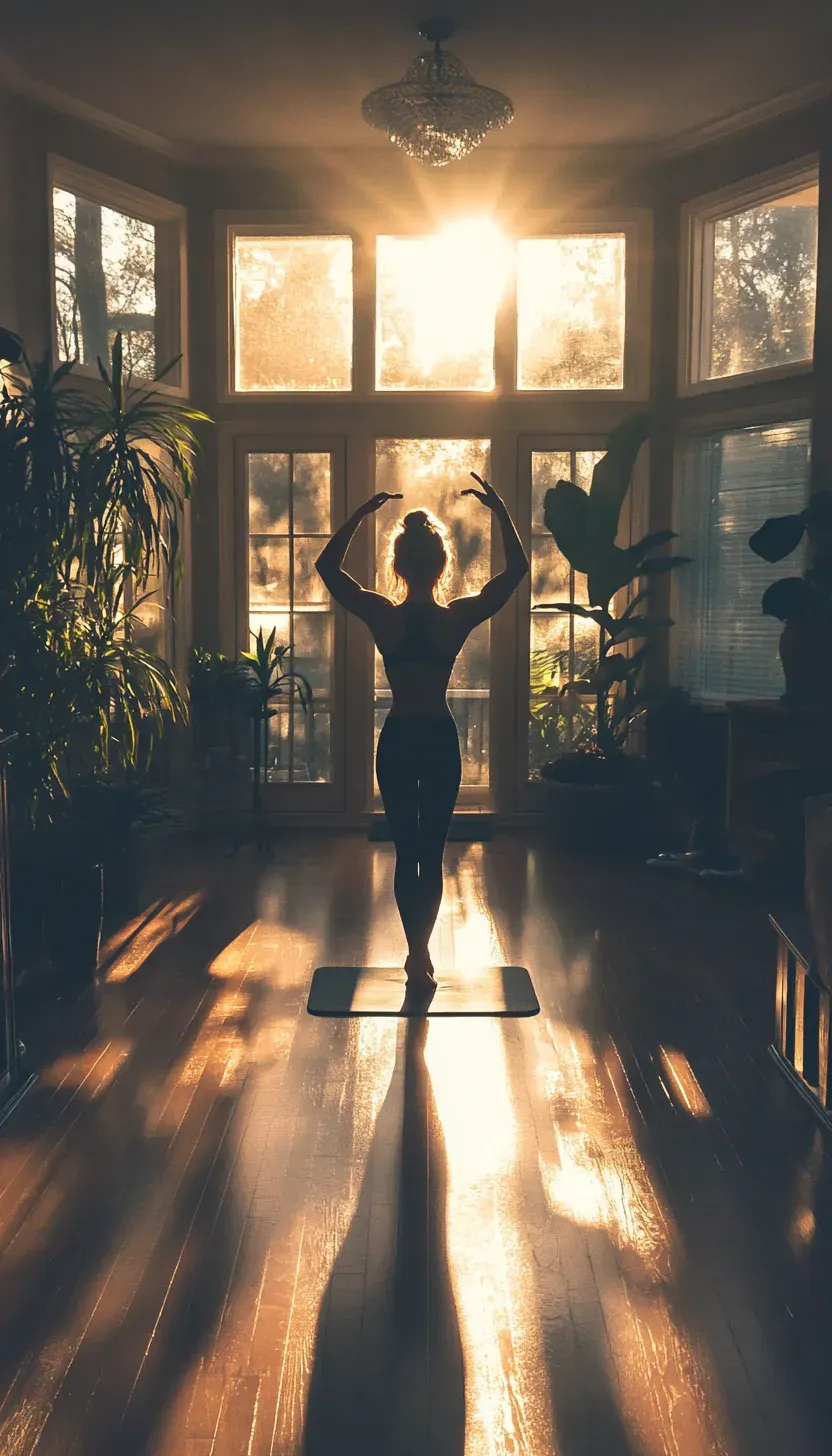Is Vinyasa Flow Yoga Hard? Understanding The Challenge And Benefits
Table Of Contents
- Introduction: Understanding Vinyasa Flow Yoga
- What is Vinyasa Flow Yoga?
- Common Challenges in Vinyasa Flow
- Is Vinyasa Flow Yoga Hard? Exploring Mental and Emotional Benefits
- Modifications for Beginners and Experts
- Tips for Overcoming Challenges in Vinyasa Flow
- How to Develop a Consistent Vinyasa Practice
- Is Vinyasa Flow Yoga Hard Compared to Other Yoga Styles?
- Embracing the Journey: Is Vinyasa Flow Yoga Worth It?
Introduction: Understanding Vinyasa Flow Yoga
Vinyasa Flow Yoga is more than just a sequence of postures; it's a dynamic practice that stitches breath and movement into a seamless tapestry of physical and mental engagement.
Unlike static styles, Vinyasa encourages practitioners to flow from one asana (posture) to another in sync with their breath, creating a rhythm that can feel meditative and invigorating.
This unique connection invites participants to be fully present, fostering mindfulness that spills over into daily life.
What sets Vinyasa apart is its adaptability classes range from vigorous to restorative, catering to diverse skill levels and personal goals. As you dive deeper into the flow, you may discover new dimensions of strength, flexibility, and balance within your body and mind.
Each session presents an opportunity to explore your limits while cultivating resilience; it's about embracing the challenges on the mat and translating that growth beyond it.
In this way, Vinyasa becomes a journey rather than purely an exercise an exploration of self through movement where every inhale brings in possibility and every exhale releases doubt.
What is Vinyasa Flow Yoga?
Vinyasa Flow Yoga is a dynamic and fluid practice that harmonizes breath with movement, creating a continuous flow that can be both invigorating and meditative.
Unlike more static forms of yoga, Vinyasa encourages practitioners to transition smoothly from one posture to another, often in sync with inhalations and exhalations.
This creates a rhythmic experience that not only enhances physical strength and flexibility but also cultivates mindfulness as your awareness shifts between breath and body.
What truly sets Vinyasa apart is its adaptability; instructors can tailor sequences based on the level of the class or specific themes, allowing for endless variations and personal exploration.
This means every session can feel unique whether you're diving into challenging poses or focusing on restorative movements.
The interconnectedness of postures fosters a deeper sense of body awareness, inviting practitioners to discover their limits while also nurturing their inner calm.
As you engage in this flowing practice, you'll not only build resilience but also uncover an empowering connection between mind, body, and spirit making each class an opportunity for growth both on the mat and beyond it.
Common Challenges In Vinyasa Flow
One of the primary challenges in Vinyasa Flow is the synchronization of breath and movement. Many practitioners find it difficult to maintain a steady breathing pattern while transitioning rapidly through poses.
This can lead to breathlessness or frustration, detracting from the mindful experience that yoga aims to provide.
The key here is patience; recognizing that mastering this synchronization takes time and practice can transform these initial struggles into moments of growth.
Another common hurdle arises from the fluid nature of Vinyasa classes, where sequences often vary significantly from one session to another. This unpredictability can be overwhelming for newcomers who may feel lost trying to keep up with unfamiliar transitions or postures.
To overcome this, cultivating a mindset of curiosity rather than comparison focusing on individual progress instead of perfection can enhance one's practice immensely.
Acknowledging that each class offers an opportunity for learning helps foster resilience both on and off the mat, turning perceived difficulties into valuable lessons in adaptability and self-compassion.
Is Vinyasa Flow Yoga Hard? Exploring Mental And Emotional Benefits
Vinyasa Flow Yoga, while physically demanding for some, offers profound mental and emotional rewards that often outweigh the perceived difficulty. The rhythmic connection of breath to movement creates a meditative state that promotes mindfulness, allowing practitioners to cultivate deep awareness of their bodies and thoughts.
This flow encourages the release of pent-up stress, urging individuals to let go of their anxieties as they transition through poses, instilling a sense of freedom and fluidity that mirrors life’s ebbs and flows.
Beyond its physical challenges, Vinyasa serves as an invitation to explore resilience. As practitioners learn to navigate difficult sequences or moments when balance falters, they discover valuable lessons in patience and self-compassion.
These experiences on the mat translate into daily life enhancing emotional intelligence and coping strategies.
When faced with adversity off the mat, participants often find themselves better equipped to respond with grace rather than react impulsively, highlighting how Vinyasa Flow Yoga fosters not just strength but also emotional clarity amidst chaos.
Modifications For Beginners And Experts: Is Vinyasa Flow Yoga Hard For All Levels?
Vinyasa Flow Yoga thrives on its adaptability, making it accessible yet challenging across varying skill levels. For beginners, classes often focus on foundational postures and breathwork, allowing new practitioners to develop strength and flexibility at their own pace.
Modifications abound like using blocks or practicing simpler poses that empower novices to fully engage without feeling overwhelmed. This customization helps foster a sense of achievement while instilling the principles of body awareness and mind-body connection.
For experienced yogis, Vinyasa offers a canvas for creativity and exploration within the flow. Challenging sequences can elevate practice into a realm where advanced techniques like arm balances or inversions unlock deeper physical prowess and mental focus.
However, even seasoned practitioners can benefit from taking modifications when necessary; this humility not only prevents injury but also deepens one’s understanding of posture alignment and breath synchronization.
Ultimately, whether you're stepping onto the mat for the first time or navigating complex transitions with ease, Vinyasa Flow yoga possesses an inherent wisdom that accommodates everyone’s journey while continuously inviting personal growth.
Tips For Overcoming What Is Hard In Vinyasa Flow Yoga
Finding ease in Vinyasa Flow Yoga is a journey that requires both mental and physical adaptation. One effective tip for navigating challenges is to cultivate mindfulness during practice.
Instead of getting caught up in achieving the perfect pose, focus on your breath and allow it to guide your movements. This not only helps keep anxiety at bay but also enhances your ability to transition smoothly between postures, turning moments of difficulty into opportunities for growth.
Another useful approach is to customize your practice according to your body’s current needs. Modifying poses when necessary using props or practicing alternatives can transform hard moments into achievable milestones.
Listening to your body fosters resilience; every time you adjust a posture or reduce intensity, you affirm what feels right for you today.
Remember, consistency doesn’t mean making progress every single session; rather, it’s about honouring where you are while still pushing just outside of your comfort zone when ready. Over time, this mindful adaptability will significantly enhance your confidence and enjoyment of Vinyasa Flow yoga.
How To Develop A Consistent Practice In Vinyasa Flow Yoga, Even If It’s Hard
Developing a consistent practice in Vinyasa Flow yoga can feel daunting, especially when physical demands and mental hurdles arise. One effective approach is to establish a schedule that aligns with your rhythms.
Consider what time of day you feel most energized; whether it’s early morning, midday, or evening, carve out dedicated time for your practice.
Setting smaller, attainable goals such as committing to just ten minutes of flow each day can help ease the pressure and gradually build your confidence and stamina without overwhelming yourself.
Additionally, creating a supportive environment can significantly enhance your experience. Surround yourself with inspiration: choose calming colours for your practice space, play uplifting music, or include items that motivate you during your sessions.
Engaging with a community whether online or in person can also provide both accountability and encouragement. Share challenges and celebrate progress together; this camaraderie can transform solitary struggles into shared triumphs, making the journey not only manageable but also enjoyable.
Remember, it's about cultivating resilience through consistency rather than striving for perfection right away allow yourself to flourish at your own pace.
Is Vinyasa Flow Yoga Hard Compared To Other Yoga Styles?
Vinyasa Flow Yoga often stands out from other styles due to its dynamic and fluid nature, which can make it feel more physically demanding.
Unlike the static postures of Hatha or the slower-paced Yin Yoga, Vinyasa encourages continuous movement coordinated with breath, creating a flowing rhythm that can elevate your heart rate and challenge your endurance.
This unique flow not only fosters strength and flexibility but also cultivates mindfulness as you transition seamlessly through poses, linking breath to movement in a dance-like sequence.
However, what makes Vinyasa Flow particularly intriguing is its adaptability; it can be modified for practitioners at any level. Beginners may focus on foundational poses while gravitating toward slowly building their stamina, while advanced yogis can explore complex transitions and balances that test their physical limits.
The beauty lies in personal interpretation what feels hard for one practitioner might serve as an invigorating challenge for another.
Ultimately, Vinyasa Flow yoga is less about comparing difficulty with other styles and more about discovering your own body's capabilities within a supportive community that emphasizes progress over perfection.
Embracing The Journey Is Vinyasa Flow Yoga Hard, And Is It Worth It?
In the grand tapestry of yoga, Vinyasa Flow offers a unique blend of challenge and reward that encourages practitioners to embrace each moment.
Yes, it can be physically demanding; mastering transitions between poses requires not only strength but also perseverance.
However, as you navigate the rhythmic flow of breath and movement, you discover that the difficulty transforms into an opportunity for self-discovery and growth. Each class becomes a vibrant exploration pushing boundaries while teaching resilience.
Moreover, the intention behind Vinyasa Flow transcends mere physicality. It invites you to connect deeper with your body and mind, fostering mindfulness amid the chaos of daily life.
As you learn to ride the waves of each sequence, you're also cultivating emotional awareness and adaptability skills that resonate far beyond your mat.
Ultimately, embracing this journey is not about conquering a “hard” practice; it's about nurturing a process filled with personal insight and holistic well-being that makes every drop of sweat worth it in the end.
Compare it with Is Vinyasa Flow for Beginners?.
People Also Asked
- What makes Vinyasa Flow Yoga challenging?
- Vinyasa’s continuous movement and breath synchronization create both mental and physical challenges.
- Is Vinyasa harder than Hatha Yoga?
- Vinyasa is typically faster-paced and more dynamic than Hatha, which can make it more challenging.
- Can beginners do Vinyasa Flow Yoga?
- Yes, with modifications and a focus on foundational poses, beginners can enjoy Vinyasa Flow Yoga.
- How can I make Vinyasa Flow easier?
- Use props, modify poses, and focus on breath to ease into the practice gradually.
- What are the benefits of Vinyasa Flow Yoga?
- It builds strength, flexibility, and mindfulness, and offers emotional benefits.
- How does breathwork impact Vinyasa practice?
- Breath synchronization in Vinyasa helps focus, relax, and connect with the body’s movements.
- What is the mental impact of Vinyasa Yoga?
- Vinyasa Yoga promotes mindfulness, reduces stress, and enhances emotional resilience.
- Can Vinyasa Flow Yoga help with stress?
- Yes, rhythmic breathing and movement can help release tension and calm the mind.
- How often should I practice Vinyasa Flow Yoga?
- Practicing 2-3 times per week is beneficial, but consistency matters more than frequency.
- Is Vinyasa Flow Yoga suitable for all ages?
- With proper modifications, Vinyasa Flow can be tailored to suit various ages and skill levels.





